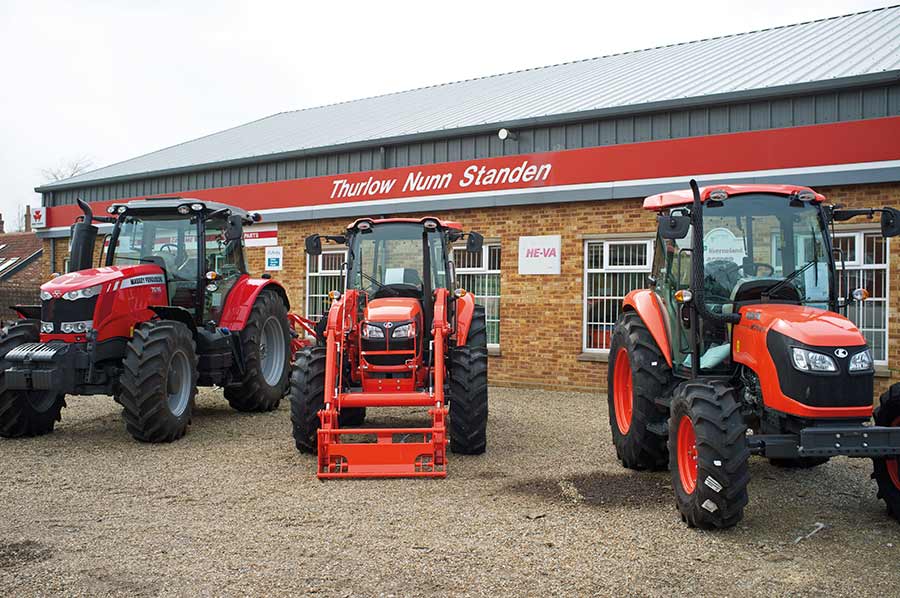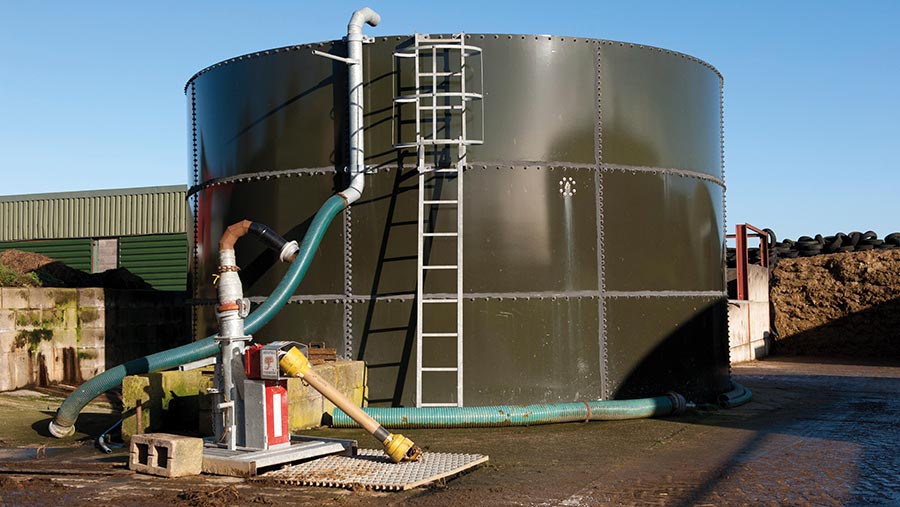Timing crucial on investments as AIA changes loom
 AIA is available on new and second-hand kit © Clynt Garnham Agriculture/Alamy Stock
AIA is available on new and second-hand kit © Clynt Garnham Agriculture/Alamy Stock The annual investment allowance (AIA) is a form of tax relief that allows farmers to deduct the full value of an eligible item of machinery or plant equipment, subject to a maximum amount, from their profit before tax.
The allowance has temporarily been set at £1m for the past three years, but it will fall to £200,000 from January 2022. This will take it to the same level it was back in 2018.
John Thame, agricultural partner with accountant and tax adviser Ellacotts, says it is crucial to check the detail of AIA rules and fully understand the timing implications, as this can have a significant effect on the allowance available.
See also: How a limited company structure can help farming businesses
Any decision to buy equipment should be based on an established machinery investment strategy, including benchmarking machinery costs, which can help to establish if a business is carrying too much or too little kit.
“Do not spend the money just for the sake of saving tax – there has to be a proper commercial reason for spending the money,” he says.
Each farm’s individual circumstances are also likely to need specific financial and taxation advice, and that should be sought as a priority.
“However, generally, if you are thinking about purchasing plant and machinery it is crucial that you make these purchases as soon as possible, to get the most benefit from the AIA being at the increased rate of £1m. Do also take into account the potential for supply chain delays,” says Mr Thame.

© Wayne Hutchinson/Alamy Stock Photo
How does the AIA work?
If a business has a 31 December year-end, the relief is straightforward, as the full £1m allowance will be available. However, where the year-end falls after 1 January 2022, transitional rules apply.
Under such rules, the AIA available is worked out in two parts, which is then added together to calculate the maximum potential AIA for that particular accounting period. The two parts are:
- The AIA available based on the £1,000,000 temporary limit for the proportion of the tax period falling before 1 January 2022
- The AIA available based on the £200,000 limit for the proportion of the tax period falling on or after 1 January 2022.
For example, if a business has a 31 March 2022 year-end the maximum potential AIA entitlement would be calculated as follows:
- £1m x nine months = £750,000 (1 April-31 December 2021)
- £200,000 x three months = £50,000 (1 January 2022-31 March 2022).
Maximum potential AIA £800,000
Who is eligible for the AIA?
AIA can be claimed by sole traders, companies and partnerships, except when members of the partnership are not individuals, such as a company or a trust.
Farming businesses run as limited companies are currently able to claim either a super-deduction or AIA. The super-deduction is a 130% capital allowance running for two years from April 2021.
This is only available to companies, in part to make up for a rise in corporation tax from April 2023.
Unlike AIA, there is no cap on the level of capital investment that qualifies for the super-deduction allowance, but all plant and machinery bought must be new.
A farming businesses run as a limited company cannot claim AIA and a super-deduction on the same amount of qualifying expenditure, so in most cases it would make sense to prioritise the super-deduction where possible.
However, the AIA could be useful in scenarios where the super-deduction is not available (for example, certain assets purchased used or second hand).
How does the timing of a purchase affect the AIA?
Careful timing of expenditure is required, as the AIA must be claimed in the period when the qualifying expenditure is incurred, says Mr Thame.
For example, if a farming business purchased a machine costing £400,000 on 30 September 2021 and another costing £400,000 on 28 February 2022, it might be assumed that the total allowable expenditure of £800,000 would qualify for AIA at 100%.
However, because the second item of machinery was purchased after 31 December 2021 the AIA limit is restricted to the period 1 January 2022-31 March 2022, which is £50,000.
Therefore, the AIA claim for the period will be £450,000 (£400,000 for the first machine and £50,000 for the second). The remaining £350,000 of expenditure would qualify for writing down allowances at the standard rate of 18%.
If both pieces of machinery had been purchased before 31 December 2021, the maximum AIA of £800,000 could have been claimed.
The date when qualifying expenditure is incurred will normally be the date the contract becomes unconditional which, if buying machinery outright, is likely to be the invoice date or date of delivery.
What qualifies for the AIA?
There is a full list of items on which AIA can be claimed on the UK government website.
However, as a guide, it can be claimed on plant and machinery that is kept for use within the business.
The machinery can be new or second-hand, although there is a restriction which means AIA is not available if the kit is bought from a connected person. This is to avoid the allowance being abused.
Eligible equipment can include:
- Tractors, combine harvesters and other agricultural machinery
- Vehicles used in the business, such as pick-ups, vans and lorries
- Computers, office equipment and all kinds of business machines
- Cost of demolishing plant and machinery
- Parts of a building considered an integral feature, including conveyors, lighting, ventilation
- Some fixtures – for example, fitted kitchens or bathroom suites when used in a business
- Alterations to a building to install plant and machinery – this does not include repairs.
There are sometimes misconceptions when people are putting up a building, says Mr Thame.
Most of the costs of putting up a building are in the floor, the walls and the roof, which do not qualify for AIA, but will qualify for the structures and buildings allowance (currently 3% a year).
However, a feature such as a slatted grain floor, which provides the ventilation, cooling and drying function, can qualify for AIA as it is regarded as key to specific processes and functions. Similarly, other features of the building may also qualify.
Other categories of expenditure not immediately obvious as plant and machinery, but which can still qualify for AIA, include slurry stores, silage pits and roofs over slurry stores. This is because they perform a specific function.
Can I claim the AIA if buying on hire purchase?
If an asset is bought on hire purchase, AIA can only be claimed on payments when the machine is brought into use. This rule can trip people up on out-of-season purchases of combines or balers.
It may be worth considering a different way of financing the purchase if it will not be possible to bring the new asset into use by the year-end.
Capital allowances are not available if machinery is leased, although income tax relief will be available on the rental costs.
How does grant support affect the AIA?
Some farmers in England will be hoping to buy equipment with grant support from the Farming Investment Fund, which is due to open later this year.
The AIA will only be available on the amount of money paid by the business after the grant has been deducted.
Any other pitfalls?
Care needs to be taken where trading in or selling old kit, as the sale of any machinery could result in a tax liability.
This means if you trade in high-value machinery, it is advisable to replace it within the same accounting year, so each action offsets the other.
Budget warning
The Budget on 27 October could introduce changes to AIA limits or other tax reliefs – Farmers Weekly will update readers where this is the case.
